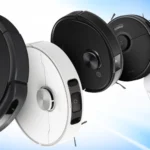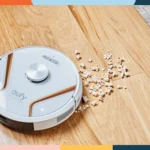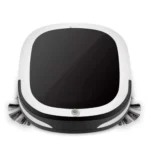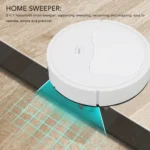Introduction
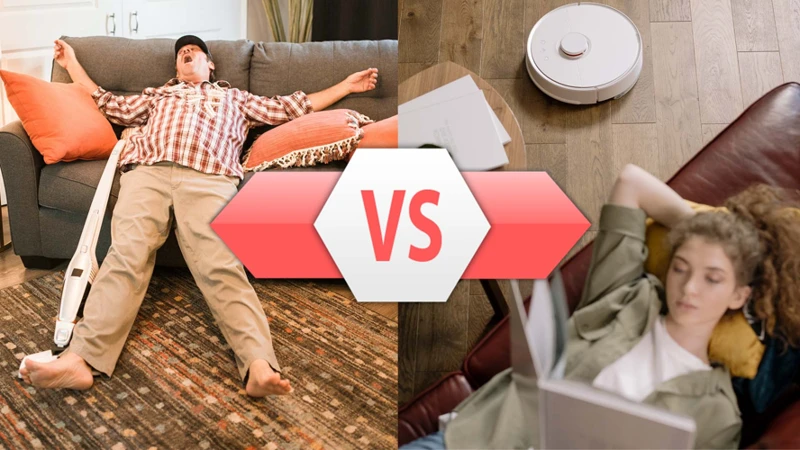
When it comes to keeping our homes clean, we often turn to technology to help us tackle the task. One of the most popular cleaning tools on the market today is the vacuum cleaner. But with so many options available, it can be difficult to determine which one is right for your home. In this article, we’ll take a close look at two popular types of vacuum cleaners – robot and traditional – and compare their cleaning capabilities to help you decide which one is the best fit for your home. So buckle up and let’s get cleaning!
What are robot and traditional vacuum cleaners?
When it comes to household appliances, the two most common types of vacuum cleaners are robot and traditional vacuum cleaners. Each type has its own unique features and capabilities that can be a deciding factor when choosing which one is right for you.
| Type of Vacuum Cleaner | Description |
|---|---|
| Robot Vacuum Cleaner | A small, automated vacuum cleaner that can be programmed to clean your floors without any human assistance. It uses sensors to detect obstacles, stairs, and other hazards so it can clean around them. |
| Traditional Vacuum Cleaner | A larger, manually operated vacuum cleaner that requires the user to push it around the house to clean floors, carpets, and other surfaces. |
It is worth noting that while the robot vacuum cleaner may seem like a newer and more advanced technology, traditional vacuum cleaners have been around for much longer and have undergone many improvements and advancements over the years. However, robot vacuum cleaners are gaining in popularity due to their convenience and efficiency.
If you want to read more about the pros and cons of robot and traditional vacuums, check out our article on pros and cons of robot and traditional vacuums or if you are interested in choosing a robot vacuum, read our guide on how to choose a robot vacuum. In the next sections, we will take a deeper look at each type of vacuum cleaner to see how they work and what their advantages and disadvantages are.
Why compare them?
Comparing robots and traditional vacuum cleaners is important as the world shifts towards more automated and efficient ways of doing things. Understanding the differences and similarities between these two types of vacuum cleaners will help consumers make informed decisions about their cleaning needs. Here are some reasons why we should compare them:
- To choose the most suitable device. While robot vacuum cleaners may seem like the future of cleaning, they may not be the best option for everyone. It is crucial to compare the two types of vacuums to determine which one is better suited for specific cleaning needs, environment, and lifestyle.
- To assess efficiency and accuracy. Efficiency and accuracy are crucial when it comes to vacuuming. Robot vacuum cleaners are programmed to perform specific tasks, while traditional vacuum cleaners require the user to control their cleaning. But which one is more efficient and accurate? The comparison will help determine which device is better.
- To determine noise level. The noise level of a vacuum cleaner can be a deciding factor, especially for those living in apartment buildings or with young children. Comparing the two types of vacuum cleaners will help consumers decide which one is quieter and thus more suitable for their needs.
- To assess the cost-effectiveness. Robot vacuum cleaners come at a higher price tag than traditional vacuum cleaners. However, they can also save time and energy in the long run, making it a more cost-effective option. Comparing the two will help determine if the initial investment is worth the savings in the long run.
- To know about maintenance and upkeep. Every device requires maintenance and upkeep to keep running smoothly. Comparing the two types of vacuum cleaners will help determine which device requires less maintenance, less regular care, or less frequent replacement of parts.
We should compare robot and traditional vacuum cleaners to determine which one is best suited for specific cleaning needs, to assess their efficiency and accuracy, determine the noise level, assess cost-effectiveness, and know about maintenance and upkeep.
Robot Vacuum Cleaner
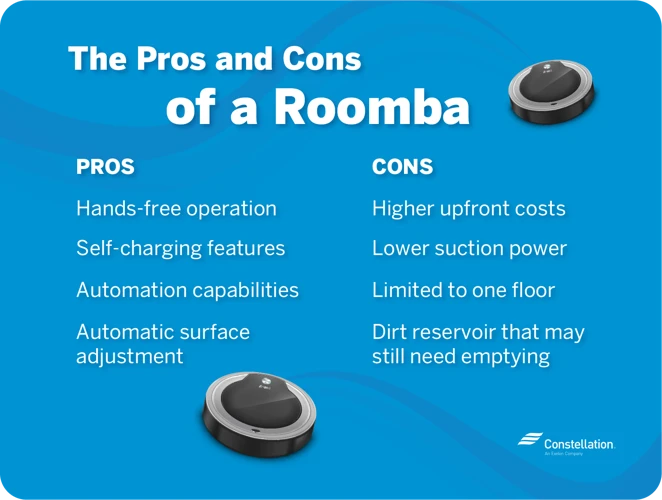
The world of cleaning appliances has come a long way since the traditional vacuum cleaner was first invented. With technological advancements, we now have access to a more sophisticated cleaning tool – the robotic vacuum cleaner. This hi-tech gadget has been gaining popularity among households around the world, promising convenience and efficiency. In this section, we’ll take a closer look at what makes robot vacuum cleaners stand apart from traditional vacuums and explore its pros and cons. Are you ready to see how the robot vacuum cleaner stacks up against the traditional vacuum? Keep reading to find out.
How does it work?
When it comes to how a robot and traditional vacuum cleaner work, there are some key differences to consider.
A traditional vacuum cleaner typically relies on suction power to pick up dirt and debris from floors and carpets. It works by using a motor to create suction that pulls dirt into the machine and filters it in a bag or container. Some newer models also include brushes to agitate and loosen dirt before it’s sucked up.
On the other hand, a robot vacuum cleaner uses a different method to clean. Instead of relying solely on suction power, it uses a combination of brushes and suction to pick up debris. These robots typically have small brushes that rotate to loosen dirt and dust, which is then suctioned up by the machine. They also often have sensors that detect dirt and debris, allowing them to focus on particularly dirty areas.
Here’s a breakdown of the key differences in how they work:
| Traditional Vacuum Cleaner | Robot Vacuum Cleaner |
|---|---|
| Relies on motorized suction to pick up dirt | Uses combination of brushes and suction to clean floors and carpets |
| May have additional brushes to agitate dirt and dust | Often has small brushes that rotate to loosen dirt and dust |
| May require manual adjustments for different floor types | Often has sensors that detect dirt and debris, allowing it to focus on particularly dirty areas |
The key difference in how these two types of vacuums work is that traditional vacuums rely solely on suction, while robot vacuums use both brushes and suction to pick up debris. This can impact their effectiveness on different types of floors and carpets, as well as how well they are able to clean in hard-to-reach areas. If you’re interested in learning more about the differences between robot and traditional vacuums, check out our efficiency battle or our ultimate robot vs vacuum comparison.
Pros and cons
When it comes to choosing between a robot vacuum cleaner and a traditional vacuum cleaner, it’s important to consider their respective pros and cons. Let’s take a closer look at each option.
| Pros | Cons |
|---|---|
| Autonomous cleaning | May miss some spots or not clean as thoroughly |
| Convenient and time-saving | Can be expensive compared to traditional vacuums |
| Can clean under furniture and in tight spaces | May get stuck or need assistance navigating obstacles |
| Can be controlled remotely via smartphone app | Requires regular maintenance and cleaning of brushes and filters |
As we can see from the table, robot vacuums have some useful features like autonomous cleaning and the ability to clean under furniture or in tight spaces. It’s a convenient and time-saving option for busy people who want to maintain clean floors.
However, it’s important to consider the potential downsides. Robot vacuums can be more expensive than traditional vacuums, they may not clean as thoroughly or miss some spots, and they require regular maintenance and cleaning.
| Pros | Cons |
|---|---|
| Powerful suction for thorough cleaning | May be heavy and difficult to maneuver |
| Less expensive compared to robot vacuums | Corded models may have limited range of movement |
| Wide variety of models and brands to choose from | No autonomous cleaning feature |
| Cordless models offer enhanced mobility and flexibility | Requires physical effort to operate |
Traditional vacuums have their own set of pros and cons as well. They tend to be less expensive than robot vacuums, and can have more powerful suction for thorough cleaning. Additionally, there’s a wide variety of models and brands to choose from.
On the downside, traditional vacuums may be heavy and difficult to maneuver, especially if they’re corded. They don’t have an autonomous cleaning feature, and require physical effort to operate.
It’s essential to consider the pros and cons of each option when deciding between a robot vacuum cleaner and a traditional vacuum cleaner. Both have their own unique advantages and drawbacks, so it ultimately comes down to personal preferences and priorities.
Advanced features
Once you’ve decided to invest in a robot vacuum cleaner, it’s important to consider the advanced features available to ensure that you get the most efficient and effective cleaning experience possible.
One of the most notable advanced features of modern robot vacuums is their ability to connect to a Wi-Fi network, allowing you to remotely control and monitor the device using a smartphone app. With this feature, you can start or stop a cleaning session from anywhere, schedule automatic cleaning at specific times, and even customize cleaning preferences using your phone.
Another impressive feature is their ability to map your home and clean accordingly. With advanced sensors and cameras, robot vacuums can scan your home and create a virtual floor plan, allowing them to navigate around obstacles and clean with precision.
In addition to these features, many robot vacuums come with special brushes designed to thoroughly clean carpets and remove embedded pet hair, as well as powerful suction motors for deep-cleaning hardwood floors.
Let’s take a closer look at some of the advanced features available in robot vacuums:
| Feature | Description |
|---|---|
| Wi-Fi connectivity | Allows for remote control and monitoring using a smartphone app |
| Mapping technology | Creates a virtual floor plan to navigate around obstacles and clean with precision |
| Carpet and pet hair brushes | Specialized brushes designed for deep-cleaning carpets and removing embedded pet hair |
| Powerful suction | Strong motors designed for deep-cleaning hardwood floors and other surfaces |
As you can see, robot vacuums have come a long way since their inception. These advanced features make them a top choice for anyone looking for an efficient and convenient cleaning solution. However, there are still some considerations to keep in mind when comparing robot vacuums to traditional vacuum cleaners.
Traditional Vacuum Cleaner
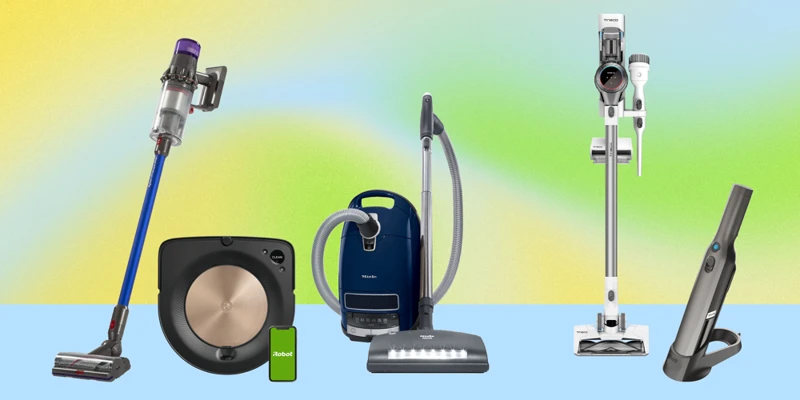
As we turn our attention towards a more conventional approach to cleaning, we come across the trusty traditional vacuum cleaner. This ubiquitous household appliance has been around for decades and has undergone numerous transformations to become what it is today. From upright models to canister types, traditional vacuum cleaners have proven their worth time and again. In this section, we will explore the inner workings of this cleaning device and weigh its pros and cons against that of the robot vacuum cleaner. So without further ado, let’s dive right in and explore the virtues of the traditional vacuum cleaner.
How does it work?
When it comes to how a robot vacuum cleaner actually works, there are a few essential components to consider. Let’s take a look at each one:
- Sensors: Robot vacuum cleaners use sensors to detect obstacles, stairs, and other potential hazards. They can also use sensors to map out the layout of a room and plan the most efficient cleaning route.
- Brushes: Typically, robot vacuum cleaners use one or more brushes to pick up dirt and debris. The brushes may be located on the underside of the device or at the sides, depending on the model.
- Filtration system: Robot vacuum cleaners have a filtration system to capture dirt and dust particles, which may include a combination of HEPA filters, mesh filters, and other types of filters depending on the specific model.
- Battery: Robot vacuum cleaners are powered by rechargeable batteries. Most models will automatically return to their charging dock when the battery starts to run low.
- Vacuum motor: The vacuum motor provides suction power to lift dirt and debris off of the floor and into the filtration system of the device.
The way a robot vacuum cleaner works is quite straightforward. It uses sensors to navigate the room, brushes to pick up dirt and debris, and a filtration system to capture particles. The battery and vacuum motor provide the powering and suction needed for effective cleaning. This automated cleaning process can save you time and hassle compared to using a traditional vacuum cleaner.
Pros and cons
When it comes to the pros and cons of robot and traditional vacuum cleaners, there are several key factors to consider. Let’s start with the pros and cons of the robot vacuum cleaner:
Pros:
- Convenience: Robot vacuum cleaners are incredibly convenient as they can be programmed to clean your house even when you are not there. This means you can come home to a clean home every day.
- Time-saving: As the robot vacuum cleaner moves autonomously around your home, you can spend your time doing other things instead of vacuuming.
- Efficiency: Robot vacuum cleaners are very efficient and can clean areas that are difficult for traditional vacuum cleaners to reach, such as under furniture and in tight spaces.
- Accessibility: Robot vacuum cleaners are a great option for people who have difficulty moving around or carrying heavy objects, as they do not require any physical effort.
Cons:
- Limited suction power: Robot vacuum cleaners have limited suction power compared to traditional vacuum cleaners, which means they may not be able to pick up larger debris or deeply ingrained dirt.
- Expensive: Robot vacuum cleaners can be quite expensive compared to traditional vacuum cleaners, which can be a significant drawback for those on a tight budget.
- Requires maintenance: Robot vacuum cleaners require periodic maintenance to keep them in good working condition, which may be more than some users are willing to do.
- May get stuck: While robot vacuum cleaners are able to navigate around most obstacles, they may get stuck in certain areas of your home, which can be frustrating.
On the other hand, let’s take a closer look at the pros and cons of traditional vacuum cleaners:
Pros:
- Suction power: Traditional vacuum cleaners generally have more powerful suction capabilities than robot vacuum cleaners, which means they can pick up larger debris and more deeply ingrained dirt.
- Versatility: Traditional vacuum cleaners come in many different models, each with its attachments, which makes them incredibly versatile for cleaning various surfaces and areas.
- Cost-effective: Traditional vacuum cleaners are generally less expensive than robot vacuum cleaners, which makes them a great option for those on a budget.
- Familiarity: Many people are more familiar with traditional vacuum cleaners and find them easier to use than robot vacuum cleaners.
Cons:
- Time-consuming: Traditional vacuum cleaners require a significant amount of time and effort to use, especially for larger homes.
- Not as accessible: Traditional vacuum cleaners can be difficult for some individuals to use, such as those with limited mobility, physical disabilities, or medical conditions.
- Noisier: Traditional vacuum cleaners can be quite loud, which can be disruptive for people who need quiet while working or studying.
- Requires storage space: Traditional vacuum cleaners take up more storage space than robot vacuum cleaners, which may be an issue for people with limited storage.
While both robot and traditional vacuum cleaners have their pros and cons, the right option for you will depend on your individual needs and preferences. It’s important to consider factors such as your budget, the size and layout of your home, and your physical abilities before making a decision.
Maneuverability and versatility
When it comes to maneuverability and versatility, traditional vacuum cleaners definitely have an edge over robot vacuum cleaners. Here are some reasons why:
1. Corded and cordless options: Traditional vacuum cleaners come with both corded and cordless options. Corded vacuum cleaners provide uninterrupted power supply and never run out of battery, whereas cordless vacuum cleaners are portable and can be used in areas with no electricity supply. Robot vacuum cleaners, on the other hand, solely rely on battery power which can be limiting depending on its capacity.
2. Various attachments: Traditional vacuum cleaners come with different attachments that make cleaning various types of surfaces such as carpets, hardwood floors, crevices, upholstery among others more efficient. Some of these attachments include extension wands, crevice tools, and dusting brushes. Robot vacuum cleaners, however, lack in flexibility and are not always able to reach tight spaces.
3. Manual control: Traditional vacuum cleaners allow users to manually control them and move them in any direction. This allows users to clean areas that require more thorough cleaning or difficult to reach areas. Robot vacuum cleaners rely on sensors and program settings to determine their path and often miss spots that require additional attention.
4. Suction power: Traditional vacuum cleaners are equipped with powerful motors that can remove dirt and debris from carpets and floors more effectively than robot vacuum cleaners. This feature is especially important for people with pets or allergies.
Versatile traditional vacuum cleaners remain a preferred for households due to their superior cleaning capabilities compared to robot vacuum cleaners. The ability to reach tight spaces, powerful suction power and multiple attachments can make cleaning an easier and less stressful task.
Comparison
As we weigh the merits of the robot and traditional vacuum cleaners, we can’t help but wonder: which will come out on top in the ultimate cleaning showdown? It’s time to pit these two forces against each other and get down to the nitty-gritty of their efficiency, noise level, cost-effectiveness, and maintenance requirements. So, without further ado, let’s dive into our side-by-side comparison and see who emerges as the cleaning champion.
Efficiency and accuracy
When it comes to cleaning, efficiency and accuracy are undoubtedly the most important factors to consider. Let’s compare how robot and traditional vacuum cleaners fare in these areas.
Robot Vacuum Cleaner:
- Efficiency – Robot vacuum cleaners use advanced sensors and mapping technology to navigate around the room, ensuring that every corner is cleaned. They can even remember the layout of your house and learn the most efficient cleaning route over time. Plus, you don’t have to worry about missing any spots as the robot cleaner will cover the entire area.
- Accuracy – Robot vacuum cleaners rely on precision programming and sensors to detect obstacles and navigate around them. They’re able to clean under furniture and in tight spaces, ensuring that all areas are reached. However, they can sometimes struggle with cleaning corners and edges as they tend to have round-shaped designs.
Traditional Vacuum Cleaner:
- Efficiency – Traditional vacuums are powerful cleaning machines that can handle large surface areas in a short amount of time. They have long cords that provide easy access to hard-to-reach areas, and their suction power is strong enough to collect even the smallest dirt particles. On the downside, you need to push the vacuum across the floor, making it a more time-consuming task.
- Accuracy – Traditional vacuums require manual navigation, which means it’s up to the user to ensure all areas are covered. They have a variety of attachments that are specifically designed to clean corners, edges, and tight spaces, making them more accurate than robot vacuums in these areas.
Conclusion:
In terms of efficiency, robot vacuum cleaners have the upper hand as they can clean entire rooms with minimal effort. However, when it comes to accuracy, traditional vacuums are the better option as they provide better access to corners and tight spaces. Ultimately, it depends on your cleaning needs and preferences. If you prioritize efficiency, a robot vacuum cleaner might be the better choice. If you prefer accuracy and more control over the cleaning process, a traditional vacuum cleaner is the way to go.
Noise level
When it comes to noise level, both robot and traditional vacuum cleaners can be quite loud. However, the noise level can vary depending on the specific model and brand. Here are some factors to consider:
– Type of flooring: If you have mostly carpeted floors, a traditional vacuum cleaner can be noisier than a robot vacuum cleaner. This is because the motor on a traditional vacuum cleaner is often louder on carpets, while a robot vacuum cleaner can adjust its suction power as needed.
– Size of the machine: Generally, the larger the machine, the louder it will be. A bulky traditional vacuum cleaner can produce more noise than a compact robot vacuum cleaner.
– Decibel rating: The decibel (dB) rating measures the loudness of a vacuum cleaner. A robot vacuum cleaner typically has a noise level of around 60dB, which is equivalent to normal conversation level. A traditional vacuum cleaner can range from 70dB to over 80dB, which can be as loud as a blender or a lawn mower.
– Technology: Some robot vacuum cleaners are designed with noise reduction technology, which can make them much quieter than traditional vacuum cleaners. However, this advanced technology can come at a higher price point.
In terms of noise level, both robot and traditional vacuum cleaners have their pros and cons. While a robot vacuum cleaner can be quieter and more discreet, a traditional vacuum cleaner can offer more powerful suction and cleaning capabilities. Your choice may depend on your noise tolerance, budget, and cleaning needs.
Cost-effectiveness
One of the most important factors to consider when choosing between a robot and traditional vacuum cleaner is cost-effectiveness. While robot vacuum cleaners may initially seem expensive, they often come with advanced features that make them more cost-effective in the long run.
Robot Vacuum Cleaner:
– Cost: Robot vacuum cleaners can range from $150 to over $1000, depending on the brand and features.
– Energy Consumption: They are designed to consume less energy compared to traditional vacuum cleaners, with some models only using 20 watts or less, which make them cheaper to operate in the long run.
– Maintenance: The maintenance costs of robot vacuums are usually low since most of them come with reusable filters that can be washed and used again multiple times before needing replacement.
– Longevity: Robot vacuums are built to last. With proper maintenance and care, they can last for years, which makes them a cost-effective investment in the long run.
Traditional Vacuum Cleaner:
– Cost: Traditional vacuum cleaners can range from $50 to over $1000, depending on the type, brand, and features.
– Energy Consumption: Traditional vacuums use more wattage compared to robot vacuums, which can result in higher utility bills in the long run.
– Maintenance: The maintenance costs of traditional vacuums can vary depending on the type of filter it uses. Filters need to be changed every few months, and the cost can add up over time.
– Longevity: The longevity of traditional vacuums can vary depending on the brand and usage, but on average, they have a lifespan of around 5 to 7 years.
When it comes to cost-effectiveness, robot vacuums may seem expensive. However, with their energy-saving design, low maintenance costs, and long lifespan, they can be more cost-effective in the long run. Traditional vacuums may be more affordable upfront, but the added costs of filters, higher energy consumption, and shorter lifespan make them less cost-effective over time.
Maintenance and upkeep
When it comes to maintenance and upkeep, both robot and traditional vacuum cleaners have their unique requirements.
Robot Vacuum Cleaner Maintenance:
- Regular emptying of the dustbin and cleaning of the filter is necessary to ensure maximum suction power.
- The bristle brush and side brush may also get tangled with hair and other debris, so it’s important to clean these parts regularly.
- Some robot vacuums come with a maintenance kit that includes replacement parts, such as filters and brushes, which should be changed periodically according to the manufacturer’s instructions.
Traditional Vacuum Cleaner Upkeep:
- Bagged vacuum cleaners require regular replacement of the dust bag, whereas bagless vacuums should have their canister emptied and filter cleaned on a regular basis.
- The brush roll of a traditional vacuum cleaner may require periodic cleaning to keep it free from tangled hair and debris.
- Some models have a belt that drives the brush, which may need to be replaced periodically. Consult the user manual for instructions on how often this should be done.
Maintenance and upkeep costs vary between robot and traditional vacuum cleaners. Replacement parts for robot vacuums tend to be more expensive, but they can generally run for longer periods of time without human intervention. Traditional vacuums require more human input but typically have less expensive replacement parts.
It’s important to note that overall maintenance and upkeep will greatly affect the longevity and efficiency of any vacuum cleaner, whether robot or traditional. Regular cleaning and maintenance can help prolong the life of the appliance and ensure it continues to function effectively.
Conclusion
After a thorough comparison of robot and traditional vacuum cleaners, it’s clear that both have their advantages and disadvantages. However, when it comes to efficiency and accuracy, robot vacuum cleaners seem to have the upper hand. They are able to clean floors with a higher level of precision compared to traditional vacuum cleaners, thanks to their advanced features like mapping technology and smart sensors.
On the other hand, traditional vacuum cleaners have an edge in terms of maneuverability and versatility. They can reach tight spaces and corners that robot vacuum cleaners may struggle with, making them a better choice for deep cleaning.
Another factor to consider is the noise level. Traditional vacuum cleaners tend to be louder than their robot counterparts, which may be a deal-breaker for some users. Moreover, robot vacuum cleaners are more cost-effective in the long run as they require less maintenance and upkeep.
In conclusion, when deciding between a robot and traditional vacuum cleaner, the right choice largely depends on your personal preferences and cleaning needs. If you prioritize efficiency and convenience, a robot vacuum cleaner may be the way to go. However, if you require a higher level of maneuverability and versatility, then a traditional vacuum cleaner might be a better fit. Ultimately, whichever option you choose, both robot and traditional vacuum cleaners can help keep your home clean and healthy.
Frequently Asked Questions
1. Can a robot vacuum cleaner replace a traditional vacuum cleaner completely?
No, a robot vacuum cleaner may not be able to clean as thoroughly as a traditional vacuum cleaner, especially on high-pile carpets or tough dirt and debris. It is best to use a combination of both for comprehensive cleaning.
2. Are robot vacuum cleaners better for pet hair than traditional vacuum cleaners?
Yes, many robot vacuum cleaners have powerful suction and brushes that are designed to remove pet hair effectively, making them a great choice for pet owners.
3. Can you control a robot vacuum cleaner remotely?
Yes, many modern robot vacuum cleaners come with a companion app that allows you to control the device remotely from your smartphone.
4. Is a traditional vacuum cleaner too heavy to use on stairs?
Yes, traditional vacuum cleaners can be quite heavy and cumbersome, which makes them difficult to use on stairs. However, there are lightweight models on the market that are designed specifically for this purpose.
5. Do robot vacuum cleaners require a lot of maintenance?
Not necessarily. Most robot vacuum cleaners come with a removable dustbin that is easy to clean, and some models even have self-cleaning brushes. However, like any appliance, they do require regular upkeep.
6. Can robot vacuum cleaners navigate around obstacles?
Yes, many robot vacuum cleaners are equipped with sensors that allow them to detect and navigate around obstacles, such as furniture and walls.
7. How long do robot vacuum cleaners run on a single charge?
It depends on the model, but most robot vacuum cleaners can run for around 90 minutes on a single charge.
8. Are traditional vacuum cleaners louder than robot vacuum cleaners?
Yes, traditional vacuum cleaners tend to be louder than robot vacuum cleaners, especially those with powerful motors. However, there are quieter models available on the market.
9. Can you use a robot vacuum cleaner on different types of flooring?
Yes, most robot vacuum cleaners can be used on a wide range of flooring, from hardwood to carpeted surfaces.
10. Do traditional vacuum cleaners use more energy than robot vacuum cleaners?
Yes, traditional vacuum cleaners tend to use more energy than robot vacuum cleaners, especially those with high-powered motors. However, this can vary depending on the model and brand.


